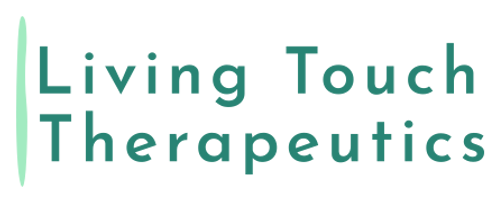TMJ Pain Explained: What It Is and How to Find Relief
- Benjamin Mishleau
- May 5
- 4 min read

If you’ve ever experienced clicking, popping, or pain in your jaw—or found yourself waking up with a sore face or neck—you may be dealing with a TMJ disorder. These conditions are more common than many people realize and can affect far more than just your jaw. Fortunately, with the right support and a whole-body approach, relief is within reach.
What Is TMJ?
TMJ stands for temporomandibular joint—the hinge that connects your jaw to your skull on either side of your face. TMJ disorders occur when this joint and the surrounding muscles become imbalanced, irritated, or inflamed. These issues are often grouped under the umbrella of TMD (temporomandibular disorders).
Common Symptoms of TMJ Disorders
TMJ disorders can show up in many ways, not just as jaw pain. Some of the most common symptoms include:
Clicking, grating, or popping sounds in the jaw
Pain in or around the jaw
Difficulty fully opening or closing the mouth
Clenching or grinding teeth (often during sleep)
Jaw soreness, especially upon waking
Difficulty swallowing
Muscle tightness or soreness in the neck, shoulders, or back
Generalized tension or discomfort throughout the body
These symptoms can be frustrating and often mimic other issues, making diagnosis and treatment tricky without a holistic view.
What Causes TMJ Disorders?
There is rarely a single cause of TMJ disorders. Instead, they tend to arise from a combination of factors:
Dental: Misaligned bites, oral surgeries, or dental trauma can contribute.
Injury: Even minor blows to the head, neck, or jaw (like whiplash) can trigger long-term imbalances.
Habits: Chronic poor posture—whether while sitting at a desk, standing, or sleeping—can strain the jaw and neck. Other contributing habits include gum chewing, teeth clenching, thumb sucking, and lifting heavy objects with improper form.
Lifestyle Factors: Stress, anxiety, poor nutrition, and lack of body awareness can increase muscle tension throughout the body, including the jaw.
Other Contributing Factors
Certain conditions and imbalances elsewhere in the body can feed into TMJ disorders:
Whiplash: Often underestimated, whiplash can misalign cervical vertebrae and create persistent tension patterns that affect the jaw.
Fibromyalgia: People with fibromyalgia often experience increased sensitivity and widespread muscle tension, including in the jaw.
Foot and Lower Limb Issues: Postural imbalances that begin at the feet can create a domino effect up the body, ultimately impacting the neck and jaw alignment.
What You Can Do About It
Relieving TMJ disorders often requires a multifaceted approach. Here are several important steps to consider:
Build Your Support Team: Work with professionals who understand how the jaw connects to the rest of the body—this may include massage therapists, physical therapists, dentists with TMJ expertise, and posture specialists.
Reduce Stressors: Emotional and mental stress can manifest physically. Identify sources of stress or anxiety in your life and implement relaxation techniques, breathing exercises, or changes to your environment to help reduce them.
Create a Smart Exercise Plan: A strong, balanced body supports a healthy jaw. Start a full-body exercise routine, focusing on posture and functional strength. Include jaw-specific exercises to retrain your tongue and jaw positioning and restore natural movement patterns.
Examine Your Daily Habits: Notice the little things you do throughout the day—like slouching, chewing gum, sleeping on your stomach, or grinding your teeth. These habits can add up to significant jaw tension. Becoming aware of them is the first step toward change.
Incorporate Massage and Self-Massage: Hands-on work from a knowledgeable massage therapist can be invaluable. Targeting trigger points in the face, neck, shoulders, and even the back can dramatically reduce TMJ-related pain. Self-massage techniques can also help maintain relief between sessions.
Final Thoughts
TMJ disorders can be painful and limiting, but they’re not something you have to just live with. With the right combination of awareness, hands-on care, and corrective movement, you can regain comfort, function, and control. If you're experiencing symptoms of TMJ, reach out today to explore how massage therapy and corrective exercise can help you on your path to healing.
Further Reading
If you suspect you’re dealing with a TMJ disorder, one of the best first steps you can take is to educate yourself. Below are two books I’ve personally read and highly recommend to anyone experiencing TMJ symptoms or who may be at risk. Both are easy to read, well-illustrated, and full of practical strategies to help reduce pain and support healing:
The TMJ Healing Plan by Cynthia Peterson, PT
This book offers a comprehensive, whole-body approach to understanding and managing TMJ disorders. Cynthia Peterson, a physical therapist, explains how posture, stress, diet, and muscular imbalances contribute to jaw pain. With step-by-step exercises, nutritional advice, and helpful illustrations, it’s a practical guide for those seeking long-term relief without invasive treatments.
Taking Control of TMJ by Robert O. Uppgaard, D.D.S.
Written by a dentist with decades of experience treating TMJ patients, this book breaks down complex medical concepts into easy-to-understand language. Dr. Uppgaard focuses on self-care techniques, jaw alignment, and daily habits that can either aggravate or improve TMJ symptoms. It's a gentle, empowering guide for those who want to take control of their condition and find relief through informed lifestyle changes.





Comments